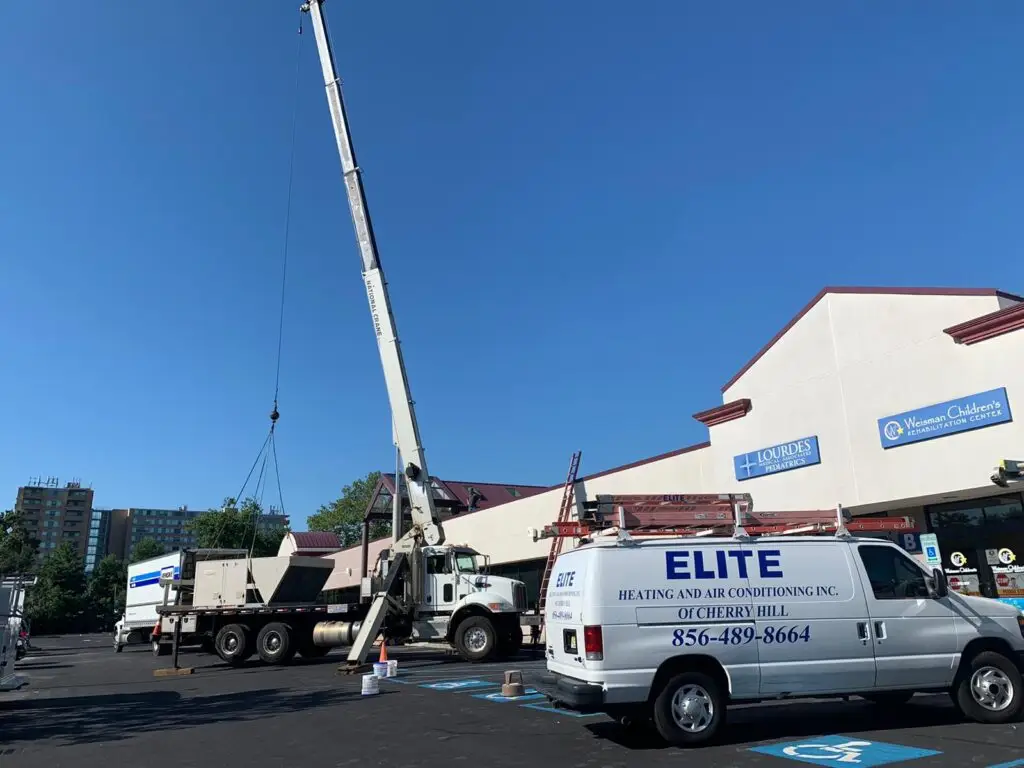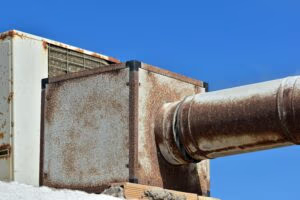Retrofitting in Commercial HVAC: How Can It Help You?
When it comes to commercial HVAC systems, energy efficiency and sustainability are not just buzzwords; they are the keys to a brighter, more cost-effective future. One of the essential strategies in achieving these goals is retrofitting.
Understanding Retrofitting
Retrofitting refers to the process of upgrading or modifying an existing HVAC system to improve its performance, energy efficiency, and overall functionality. This practice involves integrating advanced technologies and components into the existing infrastructure to meet modern standards and reduce energy consumption and increase efficiency.
Think of it like a smart make-over for your building, lowering your costs, increasing your returns, and enhancing your tenants’ satisfaction.
Why Retrofit?
The primary motivation behind retrofitting commercial HVAC systems is to make them more efficient and eco-friendly. Older systems tend to be less energy-efficient, leading to increased utility bills and a larger carbon footprint. Sometimes they’re even noisy! Retrofitting fixes these issues by optimizing your HVAC system’s performance without the need for a complete replacement.
Types of Retrofitting
Different types of equipment can be used to retrofit a commercial HVAC system.
Air economizers come highly recommended by the Department of Energy as a great way to retrofit an existing system. This equipment lets buildings pull cool, outside air into the building and circulate it, giving you “free cooling.”
Other great retrofitting ideas include enhanced ventilation systems. Energy Recovery Ventilation Systems (ERVs), reroute the hot or cold air that’s normally expelled outside the building and uses that energy instead of wasting it.
Demand Control Ventilation systems, (DCVs) are also effective retrofits. These ventilation systems use CO2 sensors to determine occupancy and then adjust the ventilation rate automatically.
Finally, smart building owners use Building Automation Systems, or BASs.
Building Automation Systems can be retrofitted to existing HVAC equipment. They can be tied to weather predictions to raise or lower the temperature in the building. They use sensors to detect occupancy and turn the heat or air conditioning on only when it is needed.
Property managers can manage multiple rooms, suites, or even entire buildings remotely and make adjustments as needed. The abilities of a BAS help improve the energy efficiency of your building which lowers the cost it takes to run it.
Benefits of Retrofitting
1. Energy Savings
Retrofitting can result in significant energy savings. On average, it can reduce energy consumption by 20% to 50%. For example, a retail store spending $50,000 annually on energy costs could save $10,000 to $25,000 per year through retrofitting.
2. Cost Reduction
By improving energy efficiency, retrofitting helps you cut operational costs. Lower energy bills, reduce maintenance expenses, and extend the lifespan of your equipment when you retrofit an existing system. And it’s less expensive than investing in an entirely new unit.
3. Environmental Impact
A retrofit HVAC system is not only good for your business but also for the environment. According to the U.S. Environmental Protection Agency (EPA), commercial buildings are responsible for nearly 20% of the nation’s energy consumption and greenhouse gas emissions. Retrofitting HVAC systems can help reduce these emissions significantly.
4. ROI (Return on Investment)
Retrofitting typically offers a quick ROI. Depending on the scale of the project, businesses can often recoup their investment within 1 to 3 years through energy savings alone.
5. Enhanced Comfort
Upgraded HVAC systems can provide better indoor air quality and a more comfortable working environment for employees, leading to increased productivity and satisfaction.
6. Compliance with Regulations
Retrofitting can help your business stay compliant with changing energy and environmental regulations, avoiding potential penalties and reputation damage.
Other Common Retrofitting Strategies
1. HVAC Controls
Installing advanced control systems allows for better regulation of temperature, humidity, and air quality. Smart thermostats and sensors optimize HVAC operations based on real-time data.
2. Energy-Efficient Motors
Replacing old, energy-draining motors with high-efficiency models can significantly reduce energy consumption.
3. Lighting Upgrades
Combining HVAC and lighting upgrades can enhance overall energy efficiency and create a more sustainable workspace.
4. Insulation and Sealing
Improving insulation and sealing ductwork prevents energy loss and ensures that conditioned air stays where it’s needed.
Real-World Examples of Successful Retrofitting in Commercial HVAC
1. Empire State Building, New York City:
In 2011, the iconic Empire State Building underwent a massive retrofitting project that included upgrading its HVAC system.
The retrofitting efforts resulted in annual energy savings of approximately $4.4 million, a 38% reduction in energy use, and a payback period of just 3 years.
2. Walmart’s Commitment to Sustainability:
Retail giant Walmart has been actively retrofitting its stores to improve energy efficiency.
By retrofitting lighting, HVAC, and refrigeration systems, Walmart has reduced its energy consumption by more than 1.5 million megawatt-hours, saving over $100 million annually.
3. Marriott International’s Green Initiative:
Marriott International launched a green initiative that includes retrofitting its hotels worldwide.
Retrofitting efforts have led to a 25% reduction in energy and water consumption, demonstrating Marriott’s commitment to sustainability.
4. Chicago’s Willis Tower (formerly Sears Tower)
One of the tallest buildings in the world, the Willis Tower underwent a retrofitting project that included energy-efficient lighting, HVAC upgrades, and window replacements.
These improvements resulted in annual energy savings of over $700,000.
These real-world examples highlight the tangible benefits of retrofitting in commercial HVAC. They demonstrate how businesses across various industries can achieve substantial energy savings, reduce operational costs, and make a positive impact on the environment by embracing retrofitting strategies.
How Elite Heating and Air Conditioning Can Help
Elite Heating and Air Conditioning of South Jersey is an expert in commercial HVAC. We’ve been serving the South Jersey area for more than 25 years and understand the challenges property managers and building owners face.
Call us. We can answer your questions and suggest options for retrofitting that will offer you a great return on your investment. We can answer your questions and suggest options for retrofitting that will offer you a great return on your investment.
No excuses. Just results.

- commercial hvac, Elite Heating and Air Conditioning, Elite HVAC, Elite HVAC of South Jersey, energy efficiency, retrofitting, South Jersey


